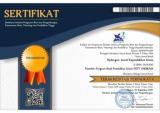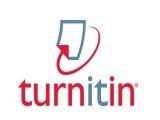Literature Review: Alkaloid Compounds in Medicinal Plants: Mechanisms and Anti-Diabetic Potential
DOI:
https://doi.org/10.33394/hjkk.v13i3.16012Keywords:
antidiabetic, alkaloid, medical plantAbstract
Alkaloids are a group of chemical compounds found in nature with the most basic nitrogen atoms. As many as 20% of plant species contain alkaloid compounds, one of which is flowering plants. Plants that contain alkaloid compounds have the potential to be antidiabetic agents. This literature review research uses the narrative literature review method. Using keywords from the range of 2014-2024, a total of 25 articles were obtained. Diabetes is a common metabolic disease caused by insulin deficiency. The plants that contain bioactive alkaloid compounds are Catharanthus roseus, Portulaca oleracea L. (PO), Momordica charantia (Bitter Melon), Uncaria Nervosa Elmer (Bajakah), Peperomia Pelucida (Water Pepper), Mulberry, Ageratum conyzoides L (Ageratum), Syzygium sp (Red Pakoba Fruit), Sansevieria trifasciata (Mother-in-law's Tongue), Triumfetta cordifolia, Phrynium Capitatum (Rice Leaf), and Annona Muricata L. (Soursop Leaf), which have been proven to contain alkaloid activity compounds that can be used as anti-diabetic agents. Alkaloid compounds play an essential role in diabetes management through various mechanisms that regulate blood glucose levels.
References
Aba, P. E., & Asuzu, I. U. (2018). Mechanisms of actions of some bioactive anti-diabetic principles from phytochemicals of medicinal plants: A review. Indian Journal of Natural Products and Resources, 9(2), 85-96.
Akuba, J., Djuwarno, E. N., Hiola, F., Pakaya, M. S., & Abdulkadir, W. (2022). Efektivitas Penurunan Kadar Glukosa Darah Daun Lamtoro (Leucaena leucocephala L.) Pada Mencit Jantan (Mus muscullus L.). Journal Syifa Sciences and Clinical Research (JSSCR), 4(1), 293-300.
Alfani, Y., Hamdani, S., & Renggana, H. (2021). Aktivitas Antidiabetes dari Tanaman Famili Myrtaceae Dengan Induksi Aloksan. As-Syifaa Jurnal Farmasi, 13(1), 20-26.
Alamzeb, M., et al. (2024). BeneficialEffectsofNaturalAlkaloidsfromBerberisglaucocarpaas AntidiabeticAgents:AnInVitro, InSilico,andInVivoApproach. ACS Omrga, 9813-9822.
Anggraini, D., Oktora, M, Z., & Hasni, D. (2025). Peran Indeks Aterogenik sebagai Penanda Komplikasi pada Diabetes Melitus Tipe 2: Tinjauan Pustaka. Scientific Journal. 4(2). 91-99.
Anugrahini, C. P. H., & Wahyuni, A. S. (2021). Narrative Review: Aktivitas Antidiabetes Tanaman Tradisional Di Pulau Jawa. Pharmacon: Jurnal Farmasi Indonesia, 120-131.
Arfan, A. R., & Habibi, A. R. (2024). Molecular Docking of Portulaca Oleracea L. Alkaloid Compounds for Potential Antidiabetic Activity Through Cdk5 Protein Expression. Jurnal Biologi Indonesia, 20(1), 1-10.
Behl, T., Gupta, A., Albratty, M., Najmi, A., Meraya, A. M., Alhazmi, H. A., & Bungau, S. G. (2022). Alkaloidal phytoconstituents for diabetes management: exploring the unrevealed potential. Molecules, 27(18), 5851.
Chaturvedi, V., Goyal, S., Mukim, M., Meghani, M., Patwekar, F., Patwekar, M., & Sharma, G. N. (2022). A comprehensive Review on Catharanthus Roseus L.(G.) Don: Clinical Pharmacology, Ethnopharmacology and Phytochemistry. J. Pharmacol. Res. Dev., 4(2), 17-36.
Ebele, O. P., & Estella, O. U. (2022). Pharmacognostic evaluation and anti-diabetic activity of ethanol extract of Triumfetta cordifolia A. Rich (Tiliaceae) leaves. European Journal of Medicinal Plants, 33(8), 57–68.
Fadel, M. N., & Besan, E. J. (2020). Uji aktivitas antidiabetes ekstrak daun sirsak (Annona muricata L.) pada mencit yang diinduksi aloksan. Indonesia Jurnal Farmasi (IJF), 5(2), 1-6.
Hasan, H., Djuwarno, E. N., Hiola, F., Ramadhani, F. N., & Halada, I. O. (2024). Penapisan Fitokimia Dan Uji Efek Antidiabetes Ekstrak Metanol Daun Brotowali (Tinospora crispa L.) Pada Mencit (Mus musculus). Journal of Pharmacology and Natural Products, 1(1), 20-31.
Hasan, H., Suryadi, A. M. T. A., & Djufri, Z. (2022). Uji aktivitas antidiabetes ekstrak etil asetat daun lamun (Enhalus acoroides) pada mencit (Mus musculus). Journal Syifa Sciences and Clinical Research (JSSCR), 4(1), 293-305.
Hidayati, S. (2021). Antidiabetic activity of Peperomia pellucida in streptozotocin-induced diabetic mice. Jurnal Farmasi Galenika, 7(2), 120-130.
Hussain, M. S., & Munir, A. (2022). The Effect of Morus alba, Alloe barbadensis Miller, Allium sativum, Annona squamosa, and other Medicinal Plants as A Therapeutic Agent for Diabetes Mellitus. Plant Health, 1(1), 25-32.
Larantukan, S. V. M., Setiasih, N. L. E., & Widyastuti, S. K. (2014). Pemberian Ekstrak Etanol Kulit Batang Kelor Glukosa Darah Tikus Hiperglikemia. Indonesia Medicus Veterinus, 3(4), 292-299.
Ningrum, R., Purwanti, E., & Sukarsono. (2016). Identifikasi Senyawa Alkaloid dari Batang Karamunting (Rhodomyrtus tomentosa) Sebagai Bahan Ajar Biologi Untuk SMA Kelas X. Jurnal Pendidikan Biologi Indonesia, 2(3), 231-236.
Obet, O., Rorong, J. A., & Fatimah, F. (2020). Skrining Fitokimia dan Aktivitas Antidiabetes dalam Ekstrak Daun Nasi (Phrynium capitatum). Jambura Journal of Chemistry, 2(2), 53-61.
Pay, C., Watuguly, T. W., & Wael, S. (2022). Potensi Ekstrak Daun Bandotan (Ageratum conyzoides L) Sebagai Obat Diabetes Melitus. BIOPENDIX: Jurnal Biologi, Pendidikan dan Terapan, 9(1), 89-99.
Puspanelli, D. A., Permana, D. A. S., & Tajudin, T. (2023, November). Kajian Aspek Farmakologi Kombinasi Tanaman Obat Indonesia Yang Digunakan Sebagai Terapi Antidiabetes. In UNNESCO (UNAIC National Conference), 1(1), 161-172.
Ridho, F. M. (2023). Mechanism of Alkaloids and Flavonoids in Bajakah (Uncaria nervosa Elmer) as Antidiabetic Agents. Jurnal Ilmu Medis Indonesia, 3(1), 9-16.
Rohdiana, D., Deswati, D. A., Jamliati., Rosanti, N., Fajrina, N. N., Maryam, S., & Widowaty, W. (2022). Aktivitas Antihiperglikemik Ekstrak Etanol Daun Cincau Hitam Pada Mencit Putih Jantan Yang Diinduksi Aloksan. Pasundan Food Technology Journal (PFTJ), 9(2), 58-61.
Roy, A. (2017). A review on the Alkaloids an Important Therapeutic Compound from Plants. IJPB, 3(2), 1-9.
Sadik, F., & Anwar, A.R.A. (2022). Standarisasi Parameter Spesifik Ekstrak Etanol Daun Pegagan (Centella asiatica L.) Sebagai Antidiabetes. Journal Syifa Sciences and Clinical Research (JSSCR), 4(1), 1-9.
Sangkal, A. (2022). Identifikasi Senyawa Bioaktif Ekstrak Etanol Buah Pakoba Merah (Syzygium sp.) Sebagai Antidiabetes Dengan Metode Tes Toleransi Glukosa Peroral. CHEMISTRY PROGRESS, 14(2), 108-115.
Santhiya, N., Priyanga, S., Hemmalakshmi, S., & Devaki, K. (2016). Phytochemical Analysis, Anti-inflammatory Activity, in Vitro Antidiabetic Activity and GC-MS Profile of Erythrina Variegata L. bark. Journal of Applied Pharmaceutical Science, 6(7), 147-155.
Seal, S., Kar, S., Pal, S., Datta, S., Debnath, A., Bannerji, S., & Sinha, D. (2024). Alkaloids of Natural Origin with Promising Anti-Diabetic Properties. Advances in Pharmacognosy and Phytochemistry of Diabetes, 61-83.
Semwal, D. K., Bamola, A., & Rawat, U. (2017). Chemical constituents of some antidiabetic plants. Univ J Phytochem Ayur Heig, 2(3), 40-48.
Sinulingga, S., Subandrate., & Safyudin. (2020). Uji fitokimia dan potensi antidiabetes fraksi etanol air daun benalu kersen (Dendrophtoe petandra (L) Miq). Jurnal Kedokteran dan Kesehatan, 16(1), 76-83.
Tran, N., Pham, B., & Le, L. (2020). Bioactive compounds in anti-diabetic plants: From herbal medicine to modern drug discovery. Biology, 9(9), 252.
Ubrusun, J., Suharjono, S., & Novrianti, I. (2021). Herbs Used as Antidiabetic: A Review. ad-Dawaa' Journal of Pharmaceutical Sciences, 4(1), 1-14.
Wulandari, L., Nugraha, A. S., & Himmah, U. A. (2021). Penentuan aktivitas antioksidan dan antidiabetes ekstrak daun matoa (Pometia pinnata J.R. Forst. & G. Forst.) secara In Vitro. Jurnal Kefarmasian Indonesia, 11(2), 132-141.
Yumna, M., Arbianti, R., Utami, T. S., & Hermansyah, H. (2018). Effect of mother-in-law’s tongue leaves (Sansevieria trifasciata) extract’s solvent polarity on anti-diabetic activity through in vitro α-glucosidase enzyme inhibition test. Journal of Conferences, 5(1), 1-5.
Downloads
Published
How to Cite
Issue
Section
Citation Check
License
License and Publishing Agreement
In submitting the manuscript to the journal, the authors certify that:
- They are authorized by their co-authors to enter into these arrangements.
- The work described has not been formally published before, except in the form of an abstract or as part of a published lecture, review, thesis, or overlay journal.
- That it is not under consideration for publication elsewhere,
- That its publication has been approved by all the author(s) and by the responsible authorities – tacitly or explicitly – of the institutes where the work has been carried out.
- They secure the right to reproduce any material that has already been published or copyrighted elsewhere.
- They agree to the following license and publishing agreement.
Copyright
Authors who publish with Hydrogen: Jurnal Kependidikan Kimia agree to the following terms:
- Authors retain copyright and grant the journal right of first publication with the work simultaneously licensed under a Creative Commons Attribution License (CC BY-SA 4.0) that allows others to share the work with an acknowledgment of the work's authorship and initial publication in this journal.Â
- Authors are able to enter into separate, additional contractual arrangements for the non-exclusive distribution of the journal's published version of the work (e.g., post it to an institutional repository or publish it in a book), with an acknowledgment of its initial publication in this journal.
- Authors are permitted and encouraged to post their work online (e.g., in institutional repositories or on their website) prior to and during the submission process, as it can lead to productive exchanges, as well as earlier and greater citation of published work.
Licensing for Data Publication
Hydrogen: Jurnal Kependidikan Kimia uses a variety of waivers and licenses, that are specifically designed for and appropriate for the treatment of data: Open Data Commons Attribution License, http://www.opendatacommons.org/licenses/by/1.0/ (default) Other data publishing licenses may be allowed as exceptions (subject to approval by the editor on a case-by-case basis) and should be justified with a written statement from the author, which will be published with the article.








